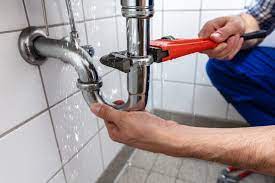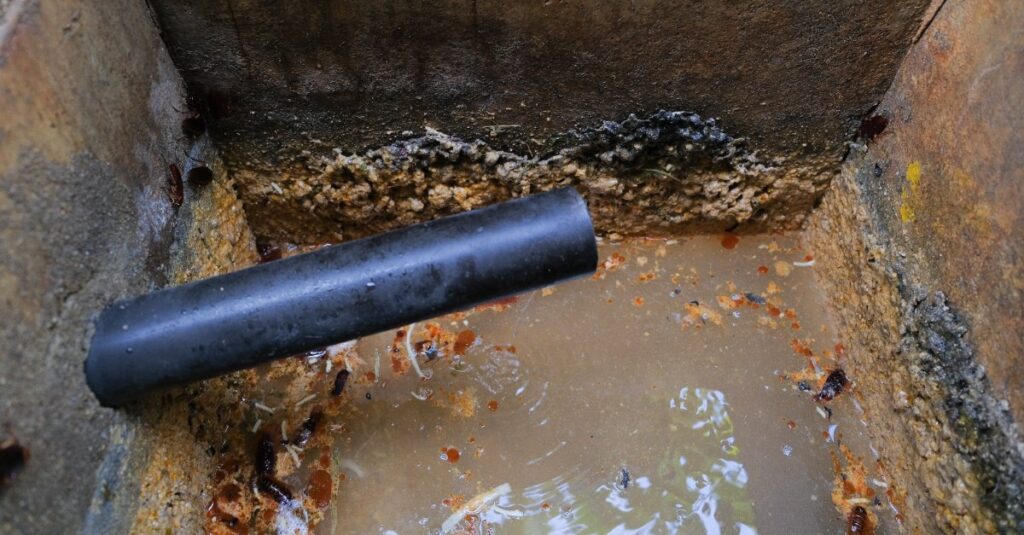Basement flooding requires extensive cleanup and reconstruction work, including removal of drywall, carpeting and sanitization measures.
Homeowners can reduce basement flooding by making sure gutters are clear and properly aligned to drain away from their house foundation, as well as installing a French drain – these drainage pipes move water underground to a dry well or ditch, which helps prevent flooding during wet weather and prevent basement flooding.
Plumbing Leaks
Homeowners returning home from work to discover water on the basement floor or pooling near where walls meet the floor could be affected by a leaky floor drain or other source, likely caused by improperly functioning sanitary fixtures, must find and address its source to prevent future flooding issues. Plumbers must then be called in immediately in order to stop further flooding of their basements.
Another leading cause of wet basements is improper foundation drainage. Most houses feature an intricate system of drain pipes to divert groundwater away from the building; when this system stops functioning correctly, surface water may accumulate around its foundation and seep into the basement through cracks and openings.
Check for leaky showers, toilets and washing machines as well as any potential water heater problems. A sure sign of burst pipes would be red water spots on walls or floors.
Foundation Leaks
Groundwater that penetrates soils around a home and soaks through cracks, window wells or porous concrete can leak into basements during heavy rainfalls, ground thaw or snow melt periods, which often results in basement flooding.
Water damage repair companies employ a classification system of 1 through 4. Class 1 water accumulation typically costs around $1,000, while Class 2 can cause extensive damage that requires removal and replacement of flooring and walls, furniture, electronics and appliances at Class 3. Lastly, Class 4 is catastrophic flooding which requires extensive restoration as well as sewage cleanup to address.
Problems in lawn grading often result in water flowing back toward the house or blocked gutters and downspouts, leading to standing water after rainfall. A simple way to mitigate this issue is adding dirt to low areas in your yard and redirecting downspouts; this will reduce standing water after rainstorms.
Sewage Backups
When sewer lines become clogged or overflow with cleaning products, sewage water can seep back into basement drains, creating an unpleasant sight and health hazards that require urgent action.
Sewage backups contain disease-causing bacteria such as E-coli and Canthamoeba that can lead to infections, illness and even death if exposed. Therefore, immediate cleanup should be completed immediately to protect residents.
Sewage may back up into basement drains due to cracks in the foundation or improperly cared-for pipes, while tree roots can sometimes penetrate and block sewer lines.
In such an instance, it’s best to have the lines replaced quickly to prevent future issues and speak with your insurance provider regarding sewer or flood damage coverage riders. Furniture and carpeting which have become contaminated with sewer waste may still be salvaged if treated quickly after their backup occurs; savers could consider getting them undercover insurance to protect against these types of incidents. You might want to look into warranty like at https://www.cinchhomeservices.com/faq-library/-/faq/does-a-home-warranty-cover-water-damage
Water Pooling
When your basement floods due to plumbing leaks, burst hot water heater, clogged washer hose or failing sump pump issues, one short-term solution is renting a commercial water extraction machine; longer-term solutions such as drain tile can be costly and involve breaking up concrete floors and digging out foundation walls for installation.
If your basement remains moist for extended periods, not only during or after rainfall, it could indicate that groundwater issues exist. Look out for things such as clogged gutters causing runoff to collect near your house; short downspout extensions allowing rainwater to saturate soil around foundation; improper landscaping that causes yard and soil slope towards home; underground springs or sources of high groundwater levels; as well as underground springs as potential sources.
If you do locate a source of water, seal any gaps with polyurethane caulk to ensure fast drying times and install dehumidifiers to remove moisture from the space.
www.wheninmanila.com
https://www.wheninmanila.com/remediating-basement-water-damage/















